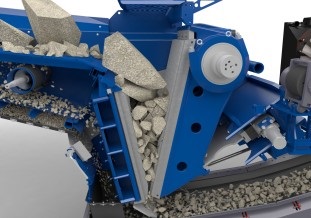
A Jaw Crusher reduces large size rocks or ore by placing the rock into compression. A fixed jaw, mounted in a "V" alignment is the stationary breaking surface, while the movable jaw exerts force on the rock by forcing it against the stationary plate. The space at the bottom of the "V" aligned jaw plates is the crusher product size gap, or the size of the crushed product from the jaw crusher. The rock remains in the jaws until it is small enough to pass through the gap at the bottom of the jaws.
Within the limits of its capacity, and size of receiving openings, it is admirably suited for such operations. Small gravel plant operations are also suited to this type of crusher, although it should not be used where the gravel deposit contains extremely hard boulders. The crusher is easy to adjust, and, in common with most machines of the jaw type, is a simple crusher to maintain.
At MEW we provide all types of spare parts that can be used for this equipment. We have spare parts for each and every equipment and within our products range.